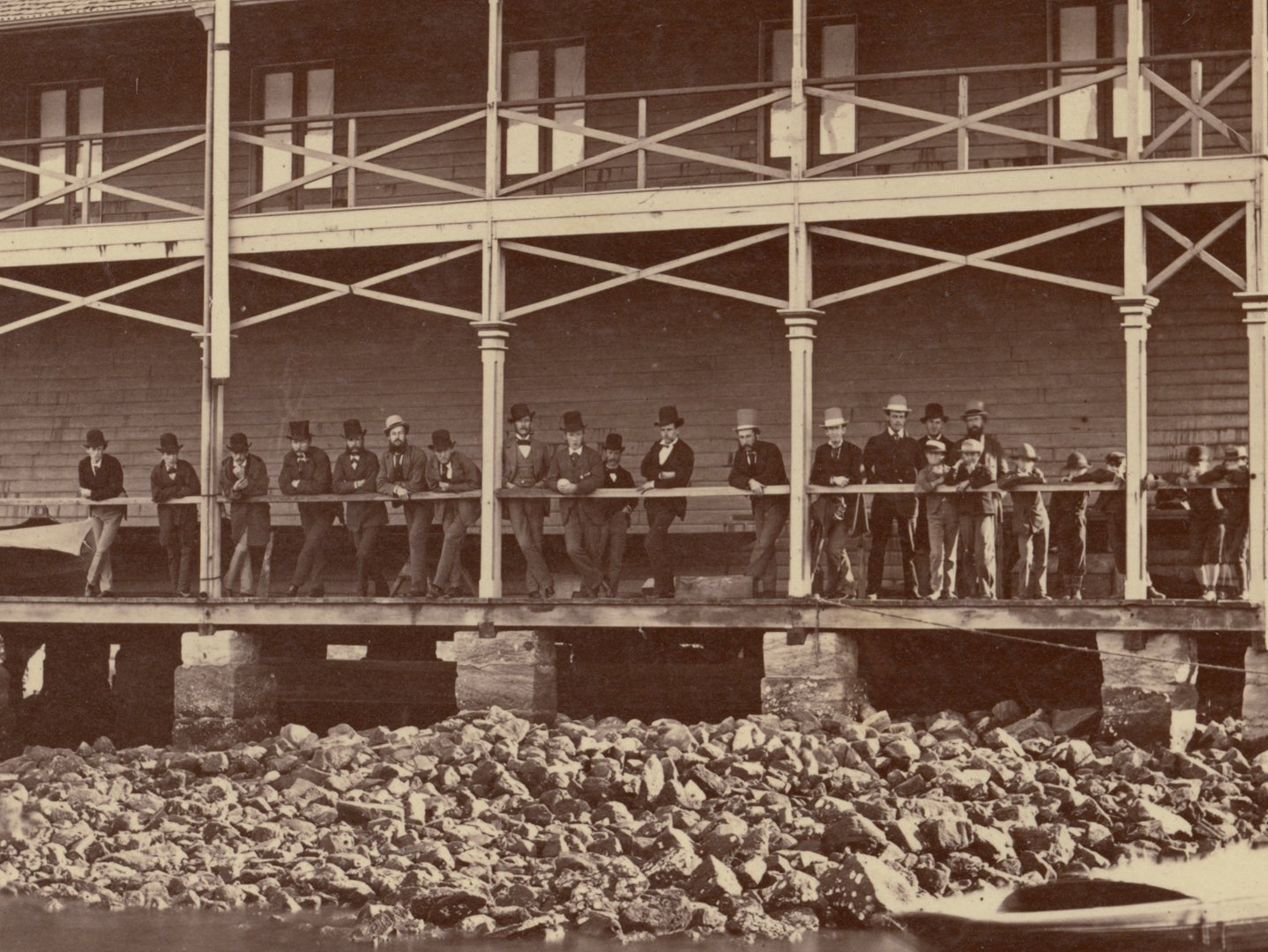
Chapter III
EVOLUTION OF THE HARBOUR
1830–1850
Shifting Shorelines
Major changes reshaped Campbell’s Cove and the site where Park Hyatt Sydney now stands. A seawall was extended into the area, and land was filled behind it to form a continuous quay, redefining the cove’s shoreline. This development caused silt to build up in the cove and shifted its western edge further east.
By 1842, Campbell’s original two-storey cottage had been replaced by a long boatshed. Steam-powered vessels became common, and coal smoke began to fill the harbour air. In 1843, dredging began to deepen Sydney Cove, and a stone wall was built along its eastern side, an area that now known as Circular Quay.
1865
Water Police Boatshed
A Water Police station was built on the future site of Park Hyatt Sydney at Campbell’s Cove. Sydney’s waterways had been patrolled since 1789, with the formal Water Police established in 1840 and merged into the NSW Police Force in 1862. The station supported search and rescue, diving operations, and marine crime investigations, and was part of the government boatsheds servicing official harbour vessels.
1873–1876
Boatbuilding at Campbell’s Cove
Two timber finger wharves and a boatshed were built on the western shoreline of Campbell’s Cove. From 1875, Londoner boatbuilder Benjamin Macbeth operated from the site, building and hiring boats with his sons. The Macbeth family remained active in the boatbuilding trade until 1888, when they relocated to Berry’s Bay.
1875
Mercantile Rowing Club
Established in 1873, the Mercantile Rowing Club built its boatsheds on the north end of where Park Hyatt Sydney sits today. It was the second amateur rowing club after the Sydney Rowing Club (est. 1870). It had over 250 members with members paying an annual membership fee of £2.20. Sir Hercules Robinson was the club’s patron and it was chaired by Henry Woolnough.
In September 1875, the Mercantile and Sydney Rowing Clubs held a combined regatta of six races. In the senior fours, the last race of the day, the Mercantile team won. Of the 260 races in the 1800s, Mercantile won 97 races, while Sydney won 75.
By 1883, the Mercantile Club property was valued at least £2000 and included a boathouse and 30 boats.
1910–1920
Hickson Road
Named after Robert Rowan Purdon Hickson (1842-1923), an Irish civil engineer who joined NSW Department of Public Works in 1881, this road was built to connect traffic from central Sydney around the waterfront to the ferry wharf at Dawes Point.
1909–1925
Water Police Headquarters
In 1909, Sydney’s Water Police moved their headquarters from Phillip Street to the former Dawes Point Battery guardhouse, originally designed by Francis Greenway. A balcony was added to the building, which had been extended in the 1860s. Nearby, the Marine Board had built a large shed and jetty at Campbell’s Cove. In 1924, the Water Police returned to Phillip Street to make way for the Harbour Bridge, and the guardhouse was demolished in 1925.




